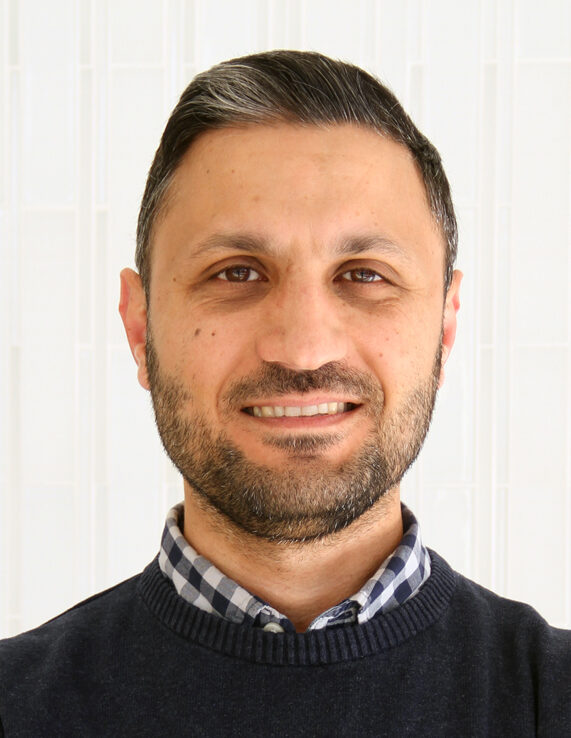A collaborative research project led by York University Kinesiology & Health Science Professor Ali Abdul-Sater will seek answers at the molecular level to help develop more effective therapies for psoriatic arthritis.

The Krembil Foundation, a family-led charitable organization, has confirmed a $664,356 grant in support of this research. Having recently developed a successful therapeutic approach for rheumatoid arthritis and gout, Abdul-Sater’s lab will expand its focus to psoriatic arthritis (PsA), a less common debilitating inflammatory disease.
“The Krembil Foundation has generously supported medical research across Canada for more than two decades,” says Faculty of Health Dean David Peters. “We appreciate their recognition of Dr. Abdul-Sater’s innovative work investigating autoimmune diseases. By bringing together basic and clinical research, this project will lay the groundwork for developing new therapies to target psoriatic arthritis.”
The Foundation’s Scientific Director, Kate Williams, acknowledges there is a personal motivation for the Foundation advancing knowledge in this area, as some members of the Krembil family live with psoriatic arthritis. “Building on the Foundation’s established partnerships with clinical researchers, the new collaboration with scientists at York will shed more light on the fundamental mechanisms of psoriatic arthritis,” she says. “We hope the discovery of critical pieces of the puzzle explaining what drives PsA will ultimately provide better options for treatment.”
An incurable, inflammatory disease of the skin, joints, tendons and ligaments, PsA is currently treated by reducing inflammation in an effort to slow its advance and avoid severe damage to the skin and joints. Unfortunately, many patients either do not respond to this treatment, stop responding after initial success, or suffer from significant side effects.
In recent research on rheumatoid arthritis and gout, Abdul-Sater identified a protein called TRAF-1, which will either block or trigger inflammation, depending on the type of immune cell with which it interacts. By creating a modified version of TRAF-1, he was able to “pump the breaks” on the protein’s ability to activate those cells that cause excessive inflammation and tissue damage.
Since TRAF-1 is also associated with psoriatic arthritis, the new project aims to determine whether modifying this protein in cells from PsA patients will have similar beneficial results.
“We found that breaking the interaction with one specific protein is a really good way to limit inflammation and reduce activation of autoimmune cells, without affecting other functions,” says Abdul-Sater, the recipient of early career research awards from the Arthritis Society, Canadian Institutes of Health Research (CIHR), Banting Foundation and York University.
Noting that inflammation is an essential component of the immune system’s response to infection, he adds “We don’t want to stop it occurring altogether. Instead, we want to reduce excessive inflammation, which can be very destructive. It’s a double-edged sword.”
In the first stage of this project, cells from psoriatic arthritis patients – provided by Toronto Western Hospital rheumatologist, Dr. Vinod Chandran – will be compared with cells from rheumatoid arthritis patients, as well as from healthy donors. The team will investigate how levels of TRAF-1 protein change in patients who are at different stages of the disease.
Next, they will “edit” the protein to bring its activation level as close as possible to that of healthy donors. Future studies will involve working on biopsies from arthritis patients, “moving from the simple to the complex,” explains Abdul-Sater. “We hope this will enable us to find the proper balance in people at risk for this very complicated disease.”
The researcher says that he looks forward to collaborating with the Krembil Foundation, “We’ve had a lot of discussion with the Foundation’s research team during the proposal stage and will continue to work with them throughout the project. I’m really excited about what we can accomplish together.”


